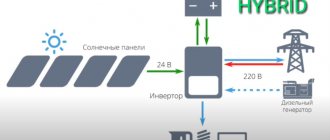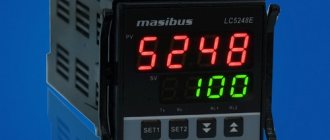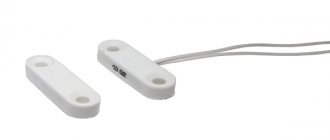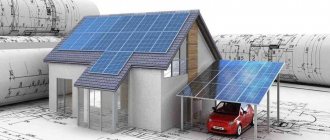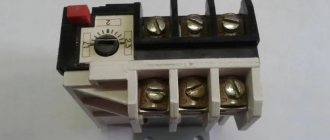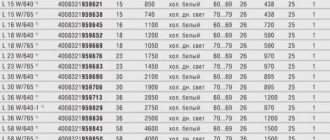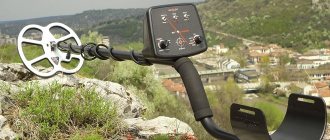The use of thermal power plants destroys the environment, and the energy sources on which they operate will one day completely exhaust themselves. Hydroelectric power plants and nuclear power plants also have their own problems associated with the complexities of construction and further operation. In this regard, in many countries much attention is paid to developments in the field of alternative sources of electricity. One of these options is a solar power plant, which uses the practically inexhaustible and available energy of the Sun.
Operating principle of a solar power plant
Solar power plants, abbreviated SES, are special structures that convert the sun's energy into electricity. Converters differ in structure and operating principle. The conversion of solar energy occurs with the help of optical elements that reflect the rays and concentrate them on a special receiver filled with water or oil. As the temperature rises, the liquid heats up, releasing steam or increasing the temperature of the coolant oil. Air masses start a generator that produces electricity.
Industrial stations are located in places of greatest solstice. To ensure efficient operation, reflective elements are equipped with mechanisms that follow the inclination of the sun's rays.
Otherwise, the efficiency of the stations would be reduced to a minimum. The concave design of the mirrors with reflective coating ensures maximum solar energy collection. For uninterrupted operation, some designs are equipped with powerful batteries, since the stations do not generate energy at night. The main advantage of these structures is the preservation of ecological peace of the environment and a constantly renewable source of solar energy. Solar stations are designed for thermal, domestic, and industrial needs.
Description
Energy production by thermal power plants involves the use of expensive fuel. In addition, the operation of such solar power plants negatively affects the environmental situation of the entire planet.
A hydroelectric power plant pollutes the surrounding area less. However, its construction requires significant financial, labor and time costs.
Therefore, more and more attention is focused on solar energy.
Fuel for the power plants in question is free. Solar power plants are also ideal from an environmental point of view.
The growing interest in this energy is explained by its efficiency and inexhaustibility. Solar power plants are used in the private sector and at industrial facilities to prevent interruptions in the supply of electricity.
The decision to install them is often made due to the serious deterioration of almost all substations. A solar power plant for your home will reliably protect your home from power outages.
Types and principle of operation: SES power plant
Modern solar power plants are structurally different from each other, although the technological process of energy generation is the same.
Types of SES:
- Tower structures;
- Dishes power plants;
- SES on parabolic-cylindrical concentrators;
- Solar stations with photocells or solar generators;
- Vacuum power plants.
Tower SPPs are distinguished by a special tower in the center of the elements. At its top point there is a water tank made of heat-resistant metal and coated with black paint. There are many mirrors around the tower, arranged to reflect the sun's rays onto the tank. The water heats up to high temperatures and begins to condense. The steam is fed to turbines and spins generators that produce current. Such designs supply high power.
On the hottest day, the heating temperature can reach 700 °C, which is more than enough for a high efficiency.
The only disadvantage is the large area occupied by the structure and the inability to generate energy at night. The principle of operation of dish stations is similar to a tower SES. The difference lies in the design. In this embodiment, separate modules of mirrors are used, including a reflector and a receiver with liquid. The receiver is connected to a steam generator, which produces electricity. One module will be enough for a small private house. Hundreds of devices are used on an industrial scale.
Price overview
You can buy a solar power plant in the Russian Federation, Kazakhstan and Belarus, as well as in other CIS countries. But the necessary resources to install a power plant are not available everywhere. This means that the feasibility of its installation is called into question.
The cost may vary in different regions, but on average does not exceed 950 thousand rubles.
It is recommended to buy such stations from branded companies:
- Gerber,
- Activ Solar, etc.
You can make them yourself or with the help of experienced engineers, which, according to statistics, happens quite often. This allows you to save significantly.
| Where to buy | Price in rubles |
| https://satom.ru/t/solnechnye-elektrostancii-1244/?sort=rating&display=gallery | from 3163 |
| https://www.avito.ru/rossiya/dlya_doma_i_dachi?q=solar+power plant | from 2550 |
| https://gws-energy.ru/solnechnye-elektrostantsii | on request |
| https://www.pulscen.ru/price/050905-solnechnaya-elektrostantsiya | from 2190 |
| https://ru.all.biz/elektrostancii-solnechnye-bgg1094312 | clarify |
How does a solar power plant work?
Thermal power plants using parabolic cylindrical concentrators operate on a different principle. Parabolic-cylindrical mirrors are installed on an iron support, concentrated to maximize the reception of sunlight. At their focus there is a light-absorbing tube in which an oil carrier circulates, entering the heat exchanger with water. The liquid quickly heats up, turning into steam, which rotates the turbogenerator. Vacuum solar power plants use the energy of air flows due to different temperatures.
The design consists:
- From a high tower;
- Built-in turbine with electric generator;
- A piece of land covered with mirrors.
The power increases as the air flows heat up. By heating the earth, the tower can generate energy around the clock, which is an important advantage compared to other solar analogues. For solar generators, the main part of the design is the batteries, made up of many thin wafers of silicon that convert the sun's rays into electricity. To provide sufficient power, multiple batteries must be installed. Such systems are usually used for household, greenhouse and exhibition lighting.
Economical solar generators: operating principle
For hard-to-reach areas with intermittent power supply, solar generators become the salvation of comfortable living. With its help, you can solve energy resource problems and ensure autonomous energy supply. Mostly household generators are designed for 220 V. The devices are equipped with a display that displays a message about battery operation. The devices are installed in areas with large amounts of sunlight: the roof of a house, the walls of a building, open areas.
Solar batteries are used for backup and autonomous power supply with a wide range of uses.
Such a device will be able to ensure the operation of household equipment: a refrigerator, a washing machine, charging computer systems, heating appliances, power tools and circulation pumps. Uninterrupted operation is guaranteed for 10 - 12 hours.
The advantages of the system are:
- In autonomy;
- Independence from central supply;
- Mobility;
- Silent operation;
- Environmental safety;
- Long service life;
- Compactness;
- Ability to work in unventilated areas.
The only drawback is the cost of the device, which subsequently pays for the cost of electricity.
Installation of photocells
They are installed using a special method:
- to increase productivity, the surface of the blocks is set at an angle of 90 degrees to the incident rays;
- the permissible error (taking into account that the Sun is moving) from the perpendicular position cannot exceed 15 degrees;
- when using the power plant all-season, it is necessary to set the angle relative to latitude to the same number of degrees, but with a “+” sign, i.e. +15 degrees;
- if you plan to use the station only in hot weather, start from an angle of – 15 degrees.
- Only by installing the solar battery at an angle of 90 degrees to the incident rays can you count on maximum efficiency. It is possible to increase the efficiency by up to one and a half times if the solar battery is mounted on a rotating device capable of moving following the movement of the Sun. The method is designed for small structures.
Pros and cons of SES
Solar generators have many advantages. The main one is environmental friendliness for the environment.
Advantages of solar power plants:
- Solar energy is constantly renewable;
- SES does not harm the environment;
- Independence from the central power supply;
- Full autonomy of the system;
- Long service life;
- Free energy resource.
The role of man in obtaining electricity in this case is reduced to zero. Generating energy in this way also has disadvantages. Purchasing equipment will require serious investment. In addition, it is necessary to purchase a battery, since at night the SES does not generate electricity. Installation of equipment requires additional space. It can be carried out on the ground, the roof of a house, or the wall of a building. Disadvantages include the need to clean the reflective surface from dust and dirt, as well as heating of the atmosphere above the surface of the equipment. The power of the generated current directly depends on weather conditions.
If you rationally approach the issue of installing solar panels, you need to take into account some nuances:
- Analyze whether there are many sunny days in the proposed area;
- Check the possibility of connecting to the central network;
- Find out how often power outages occur;
- Decide what power devices will be used in everyday life.
SPPs have quite a lot of advantages and disadvantages, but natural resources do not last forever and solar energy stations can become a worthy replacement for conventional resources.
Advantages
Advantages of power plants using solar energy:
- Energy availability;
- Unlimitedness, or inexhaustibility;
- No harm to the environment;
- Long (up to 25 years) service life;
- Independence from centralized energy supplies;
- Does not require regular maintenance;
- Quiet operation;
- Cheapness.
Solar power plant diagram: what to look for when purchasing
Autonomous solar power plants for the private sector are most in demand for backup power supply to the private sector.
The thermal battery diagram represents a single block with a removable cover, consisting of elements:
- Photo panels for creating current;
- Storage battery;
- Inverter, for converting current;
- The charge controller promotes the accumulation of resources in the battery.
When choosing a generator, you need to pay attention to some nuances. The number of solar panels is selected in accordance with the load, the required operating time and the geographical location of the facility. Wires must be equipped with waterproof connectors. When choosing a charge controller, it is better to choose a modern MPPT device. The DC switch is an important element. First, it protects controllers from burnout. Secondly, it allows for safe maintenance of the complex, which must be provided at least 2-3 times a year.
In addition, care must be taken to provide protective grounding for devices and people.
Device
Power plant kit includes:
- solar battery module;
- inverter and controller;
- energy accumulator.
The first is formed by semiconductor cells that generate electricity under the influence of the sun, which is accumulated by a battery that powers consumers and an inverter. The DC energy accumulated by the battery is converted into alternating current. Its frequency is 50 Hertz. This is the current that household appliances need.
The controller performs the function of controlling the charging and discharging of the battery. He turns it on when necessary for recharging or, to avoid discharging it with leakage current, turns it off.

